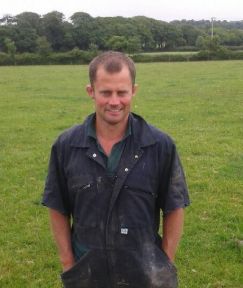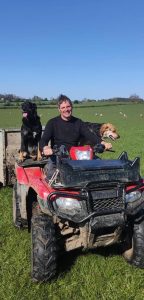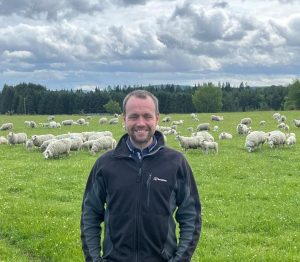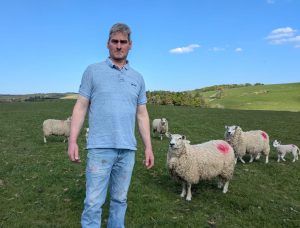James Mutton has improved flock net margins by 20% by introducing a labour saving, easy care, outdoor lambing system featuring 800 Highlander ewes

“Our objective is to develop a more extensive sheep enterprise and whilst we’re achieving that goal, we are also improving the flock’s efficiency and making considerable improvements to its overall performance,” James explains. “Over the last five years we’ve been grading up our Lleyn cross Poll Dorset cross ewes to pure Highlander status, genetics we choose which had been bred in New Zealand specifically for extensive systems. Equally important, these ewes were bred from performance recorded stock.
“Whilst we are retaining the ewe lambs as replacements as we work towards a closed Highlander flock, we have also swapped a traditional terminal sire for the Abermax and the New Zealand bred Primera meat sire.
“For starters we are achieving an average 10% more lambs reared. Last season the Highlander ewes scanned at 204% and ewe lambs at 130%, whilst they reared 180% and 112% respectively.
“Furthermore, 75% of the lambs are finished to 19kg target weight off grass and red clover rich organic swards between 16 and 24 weeks of age, that’s four to six weeks faster than previously, whilst the entire crop finishes by December.
“The Highlander ewes are maturing at 60kg to 70kg so we’ve been able to increase stocking rate from stocking rate from average 6.5 to eight ewes and lambs per acre, and we’ve found both the Abermax and Primera have great ram power – we’re turning them out at a ratio of 1:85.”
Swapping traditional February indoor lambing to outdoors in April has introduced the biggest cost savings for James. “We are saving £10,000 on feed alone, whilst we’ve been able to cut labour cut labour from three people to just myself for most of the year, with extra help at mainly lambing. The Highlander has been selected in New Zealand for unassisted lambing with a smaller head and narrower shoulders, consequently, contact at lambing is very minimal and the new born lambs are very vigorous. The ewes are also demonstrating great maternal instinct, they have a natural ability to keep their lambs together and they have plenty of milk.
“The Highlander ewes are also proving to be very good grazing sheep, they can maintain condition from less forage and they don’t require flushing.”
Improving grazing management by introducing a rotational system is amongst James’ next challenges in his quest to further step up flock efficiency. “We have made huge strides in a relatively short period of time by changing the flock’s entire genetics, however we believe there is considerably more to achieve as we build resilience in to the enterprise to enable it to become increasingly sustainable.”



